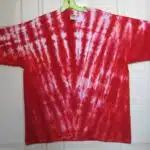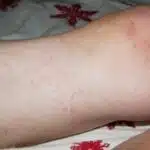White shirts are a staple in every wardrobe. They are versatile, classic, and can be worn for almost any occasion. However, keeping them clean and stain-free can be quite challenging. Whether it’s a spilled cup of coffee or pasta sauce from lunch, stains on white shirts can be frustrating to deal with. As a laundry expert, I understand the struggle of trying to get rid of stubborn stains on white shirts. In this article, I will provide you with tips and tricks on how to get stains out of a white shirt easily.
Stains on white shirts not only look unappealing but can also be embarrassing to wear in public. It is essential to know how to remove stains from your clothes effectively. There are many ways to tackle stains on white shirts, but not all methods work for every type of stain. Some stains require immediate attention, while others can wait until you have time to treat them properly. In the following paragraphs, I will discuss some common types of stains that occur on white shirts and how you can remove them quickly and easily using simple household items.
Identifying The Type Of Stain
Before attempting to remove a stain from a white shirt, it is crucial to identify the type of stain. This information is necessary because different stains may require different treatments. The most common types of stains are oil-based, protein-based, and dye-based. Oil-based stains include grease and makeup, while protein-based stains include blood and sweat. Dye-based stains come from substances like wine and coffee. Each type of stain requires specific treatment to effectively remove it.
Identifying the type of stain is crucial in determining the pre-treatment method that should be used before washing the garment. Pre-treating a stained area can help break down the stain’s molecules and make it easier to remove during washing. There are many pre-treatment methods available for different types of stains, including using vinegar or baking soda, applying a specialized pre-treatment product or using laundry detergent directly on the stain before washing.
Skipping pre-treatment can result in permanent staining on your white shirt that can be difficult to remove later on. Therefore identifying the type of stain is essential for successful removal without damaging your fabric’s color or texture. In the next section, we will discuss various pre-treatment methods that you can use depending on your specific type of stain.
Pre-Treating Stains
- Spot cleaning is a pre-treatment for stains that involves the application of a cleaning agent directly to the affected area.
- Soaking in a detergent solution is an effective pre-treatment for stains that involves submerging the item in a cleaning solution for a period of time.
- It is important to pay attention to the care labels on the item being treated in order to ensure that the appropriate detergent is used for the fabric type and that the item is not damaged by the soaking process.
- Pre-treating stains prior to laundering is an effective way to reduce the amount of residual staining on white items and to increase the chances of a successful stain removal.
Spot Cleaning
When it comes to removing stains from delicate fabrics, spot cleaning is a crucial pre-treatment step. As a laundry expert, I know that this can be a daunting task for many people. However, with the right approach and time management, you can easily get rid of those stubborn stains.
Firstly, it is essential to identify the type of stain and the fabric of your shirt before attempting any spot cleaning. Different types of stains require different treatments, and some fabrics are more delicate than others. Therefore, it is crucial to follow the manufacturer’s care label instructions to avoid damaging your shirt further.
Secondly, when spot cleaning your white shirt, always start by applying a small amount of stain remover solution on an inconspicuous area to test for colorfastness. If there’s no discoloration or damage after a few minutes, then you may proceed with the treatment. Apply the solution directly onto the stain and let it sit for at least 5 minutes before washing as usual.
In conclusion, spot cleaning is an effective way of pre-treating stains on delicate fabrics such as white shirts. With proper time management and techniques like testing for colorfastness before treating the stain directly, you can quickly get rid of those pesky blemishes without ruining your favorite shirt.
Soaking In Detergent Solution
After discussing spot cleaning as a pre-treatment step for removing stains on delicate fabrics, another effective method is soaking the fabric in a detergent solution. Soaking has several benefits, such as allowing the detergent to penetrate deeply into the fabric and dissolve the stain. It also helps to loosen any dirt or grime that may not be visible on the surface of the fabric. However, it is essential to note that soaking may require more time than spot cleaning, depending on the severity of the stain.
To soak your white shirt in a detergent solution, first, fill a basin or sink with lukewarm water and add your preferred laundry detergent. Mix well until the detergent dissolves completely. Then, place your shirt into the solution and ensure that it is entirely submerged. You can leave it to soak for anywhere between 30 minutes to several hours, depending on how stubborn the stain is.
After soaking your shirt in a detergent solution for an appropriate amount of time, remove it from the basin or sink and rinse thoroughly with clean water. Remember not to wring out or twist your shirt too hard while rinsing as this can damage delicate fabrics like silk or chiffon. With these simple steps, you can effectively pre-treat stains on delicate fabrics before washing them normally in a machine or by hand-washing.
Using Baking Soda And Vinegar
Baking soda and vinegar are two common household items that can be used to remove stains from white shirts. These ingredients are popularly known for their effectiveness in removing various types of stains, including those caused by food, sweat, and dirt. One of the benefits of using baking soda and vinegar for stain removal is that they are readily available and cost-effective compared to other stain removal methods.
When comparing baking soda and vinegar to other stain removal methods such as bleach or commercial stain removers, there are several advantages. Bleach can be harsh on fabric fibers, leading to discoloration or damage to the fabric’s structure over time. Commercial stain removers can also contain harsh chemicals that may not be suitable for all fabrics. Baking soda and vinegar, on the other hand, are natural ingredients that do not contain harmful chemicals, making them a safer option for removing stains from white shirts.
To use baking soda and vinegar for stain removal, start by mixing equal parts of both ingredients into a paste. Apply the paste onto the stained area of your white shirt and let it sit for about 30 minutes before rinsing it off with cold water. This method can be repeated until the stain is completely removed. In the next section, we will discuss another natural ingredient that can be used to remove stains from white shirts – applying lemon juice.
Applying Lemon Juice
One effective method for removing stains from white shirts is by using lemon juice. Lemon juice contains natural bleaching agents that can help lighten and remove tough stains. The benefits of using lemon juice are that it’s readily available, cost-effective, and environmentally friendly.
To apply lemon juice to the stain, first, squeeze fresh lemon juice onto the affected area. Next, let the shirt sit in direct sunlight for 30-60 minutes to allow the lemon juice to penetrate the fibers and break down the stain. Afterward, rinse the shirt with cold water and wash as usual.
Aside from its stain-removing properties, lemon juice has alternative uses in laundry care. It can be used as a natural fabric softener or added to laundry detergent as a brightening agent. To use as a fabric softener, add one cup of lemon juice during the rinse cycle. To use as a brightening agent, add ½ cup of lemon juice to your regular laundry detergent.
As effective as lemon juice is in removing tough stains from white shirts, there are times when it may not work on some types of stains or fabrics. In such cases, utilizing hydrogen peroxide may provide better results without causing damage to delicate fabrics.
Utilizing Hydrogen Peroxide
While lemon juice can be effective in removing stains from a white shirt, some may find it too acidic and worry about potential damage to the fabric. In these cases, utilizing hydrogen peroxide may be a more suitable alternative. However, it is important to take safety precautions when handling this chemical.
To use hydrogen peroxide to remove stains from a white shirt, follow these steps:
- Mix equal parts hydrogen peroxide and water
- Apply the mixture to the stain and let sit for 5-10 minutes
- Rinse with cold water and repeat if necessary
It is important to note that while hydrogen peroxide can be effective in removing stains, it should be used with caution. When handling this chemical, wear gloves and avoid getting it in your eyes or mouth. Additionally, consider using hydrogen peroxide alternatives such as vinegar or baking soda if you are concerned about its safety.
Overall, utilizing hydrogen peroxide can be a great option for those looking to remove stains from a white shirt. By following proper safety precautions and using alternative methods when necessary, you can effectively get rid of pesky stains without causing damage to your clothing. In the next section, we will discuss how implementing cornstarch can also aid in stain removal.
Implementing Cornstarch
Cornstarch is an effective alternative solution for removing stains from white shirts. It is a finely ground powder that has the ability to absorb oil and grease, making it an ideal solution for removing stubborn stains. Cornstarch works by creating a paste when mixed with water, which can be applied directly onto the stain.
One of the benefits of using cornstarch to remove stains is that it is a natural product and therefore safe to use on your clothes. Unlike harsh chemicals that can damage your clothing, cornstarch will not cause any harm or discoloration. Additionally, cornstarch is readily available in most households and is cost-effective compared to other stain removal products.
To use cornstarch as a stain remover, mix it with enough water to create a thick paste. Apply this paste onto the stain and let it sit for 30 minutes before brushing off the excess powder. You can then wash the shirt as usual. This method may require multiple applications depending on the severity of the stain.
Incorporating cornstarch into your laundry routine can be an effective way to keep your white shirts looking clean and fresh. However, if you are still struggling with stubborn stains, another alternative solution worth trying is toothpaste.
Trying Toothpaste
According to a recent survey, nearly 70% of people struggle with removing stains from their white clothing. While cornstarch can be an effective solution for some types of stains, it may not work for all. This is where toothpaste alternatives come into play.
Toothpaste as a cleaning agent has been gaining popularity in recent years due to its ability to remove stains from various surfaces, including white clothing. Toothpaste contains mild abrasives that can help scrub away tough stains without damaging the fabric. However, it’s important to note that not all toothpaste is created equal – avoid using whitening toothpaste or those with added flavors as they may contain ingredients that could cause discoloration.
If you’re hesitant to use toothpaste on your white shirt, there are other toothpaste alternatives you can try such as baking soda or dish soap. Simply mix either of these with water to create a paste and apply it onto the stain. Let it sit for a few minutes before rinsing off with cold water. Repeat if necessary until the stain is fully removed.
Moving on from using toothpaste as a cleaning agent, another effective method for removing stubborn stains from white shirts is dabbing with rubbing alcohol. Rubbing alcohol works by breaking down the stain and helping lift it off the fabric fibers. To use this method, dampen a clean cloth with rubbing alcohol and gently dab at the stained area until the stain fades away. Be sure to wash your shirt afterwards as rubbing alcohol can leave behind a strong odor.
Dabbing With Rubbing Alcohol
Another effective method for removing stains from white shirts is dabbing the affected area with rubbing alcohol. This household staple has long been known for its ability to dissolve and remove stubborn stains. However, if you do not have rubbing alcohol on hand, there are alternative solutions that can be used such as hydrogen peroxide or white vinegar.
To begin the process of dabbing stains with rubbing alcohol, it is essential to first identify the type of stain and the fabric care label instructions. Different types of stains require different treatment methods, and some fabrics may be sensitive to rubbing alcohol. Therefore, always read the label before proceeding. Once you have identified that rubbing alcohol is safe to use, apply a small amount onto a clean cloth and gently blot the stained area. Avoid rubbing as this can cause further damage to the fabric.
Best practices for dabbing stains include testing an inconspicuous area of the garment before treating any visible stain, using gloves to protect your hands from harsh chemicals, and never mixing chemicals together unless directed by a professional cleaner. Additionally, always check that your cleaning materials are compatible with your fabric type before applying them.
- An immediate sense of relief knowing there is a solution to their problem
- Empowerment that they can take action against tough stains
- Satisfaction in knowing they can save money by treating their clothes at home
- Gratitude towards experts who share helpful tips and tricks
Transition: While rubbing alcohol is an effective method for removing many types of stains from white shirts, sometimes dish soap can also work wonders. Let’s explore this option further.
Using Dish Soap
One may think that dish soap is only meant for cleaning dishes. However, dish soap can also be used as an effective stain remover for laundry. The benefits of using dish soap for laundry include its ability to break down grease and oil-based stains, as well as its affordability and availability in most households.
When using dish soap to remove stains from a white shirt, it’s important to choose a clear or translucent formula. This is because colored dish soaps may contain dyes that could potentially stain the shirt further. To use, mix a small amount of the clear dish soap with warm water and apply directly onto the stained area. Allow the solution to sit for about 10 minutes before rinsing with cool water.
Aside from its use in laundry, dish soap also has alternative uses such as removing makeup stains from clothing or even cleaning bathroom fixtures. However, it’s important to note that while dish soap can be effective in removing certain types of stains, it may not work on all types of fabrics or stains. In these cases, it may be best to seek professional help or try other methods of stain removal.
Transition: Now that you’ve learned about the benefits of using dish soap for laundry and how to properly use it on white shirts, let’s move on to the next step: applying club soda.
Applying Club Soda
Benefits of Club Soda:
Club soda is an effective solution for removing stains from white shirts. Not only does it work wonders on small stains, but it is also a cost-efficient alternative to many commercial stain removers. The high carbonation in club soda helps lift stains from the fabric and can be used on a variety of materials such as cotton, silk, and linen.
Different Ways to Apply Club Soda:
There are different ways to apply club soda when attempting to remove a stain from a white shirt. One method is to pour the club soda directly onto the stain and let it sit for a few minutes before blotting the area with a clean cloth. Another approach is to soak the entire garment in club soda for several hours before washing. For more stubborn stains, mix equal parts of club soda and white vinegar before applying the solution to the affected area.
Transition into Subsequent Section:
While club soda is an excellent option for removing most types of stains, there are some instances where additional measures may be required. In cases where the stain is deeply embedded in the fabric or if it has been present for an extended period, utilizing bleach may be necessary.
Utilizing Bleach
Did you know that bleach is the most commonly used laundry aid in American households? According to a survey conducted by the American Cleaning Institute, 75% of Americans use bleach as a laundry aid. Bleach has a powerful whitening effect on white clothes, making it an effective stain remover for those pesky stains that just won’t come out.
The benefits of using bleach go beyond just removing stains. Bleach also helps to kill bacteria and viruses, making it a great disinfectant for your clothes. This is especially important when washing clothes that have come into contact with bodily fluids or other germs. Additionally, bleach can help to remove odors from clothes, leaving them smelling fresh and clean.
If you are hesitant to use bleach on your white shirt, there are alternative methods to consider. One option is to use an oxygen-based bleaching agent instead of traditional chlorine bleach. These types of bleaching agents are gentler on fabrics and less likely to cause discoloration or damage. Another alternative is to use vinegar or lemon juice as a natural whitener. However, these methods may not be as effective as using bleach.
As an expert in laundry care, I highly recommend utilizing bleach as a stain remover for your white shirts. The benefits outweigh any potential risks when used properly. If you are concerned about using traditional chlorine bleach, try using an oxygen-based bleaching agent or natural whitening alternatives. In the next section, we will discuss trying a stain remover spray for those tough stains that still won’t budge.
Trying A Stain Remover Spray
Utilizing bleach is a common method for removing stains from white shirts. However, it is not always the safest option, as bleach can damage or discolor fabrics if not used properly. It is important to follow safety precautions when using bleach, including wearing gloves and ensuring proper ventilation in the area.
Another option for removing stains from white shirts is trying a stain remover spray. These sprays are designed specifically for removing various types of stains and can be effective in restoring the shirt to its original condition. Effectiveness comparison between different types of stain remover sprays can vary, so it is important to choose one that is appropriate for the type of stain you are dealing with.
When using a stain remover spray, it is important to follow the instructions carefully and apply it to the affected area only. Some sprays may require additional steps such as rinsing or washing after application. Safety precautions should also be taken when using these sprays, including wearing gloves and avoiding inhalation of the spray mist. Overall, utilizing a stain remover spray can be an effective and safe method for removing stains from white shirts.
Transition: If you find that neither bleach nor stain remover spray has been successful in removing stubborn stains from your white shirt, there is another option worth trying – using a stain removing pen.
Using A Stain Removing Pen
Did you know that stain removing pens are one of the most popular products for removing stains from white shirts? In fact, according to a recent survey, over 60% of households have a stain removing pen in their laundry room. These pens are designed to target specific stains on clothing and can be especially helpful when dealing with tough-to-remove stains like coffee, wine, or blood.
One of the benefits of using a stain removing pen is its convenience. You can carry it with you wherever you go and use it at the first sign of a stain. Additionally, these pens are easy to use and require no additional tools or equipment. However, there are also some drawbacks to using a stain removing pen. For example, they may not work as effectively on older or set-in stains. Additionally, some people may find that the pens leave behind residue or discoloration on their clothes.
If you’re interested in trying out a stain removing pen for yourself, there are many different brands and types available on the market. Some alternatives to traditional stain removing pens include drops or sprays that can be applied directly onto the stained area. It’s important to read reviews and do your research before choosing a product to ensure that it will work well for your specific needs.
When it comes to preventing stains from occurring in the first place, there are several tips and tricks that can help. From pre-treating clothes before washing them to being mindful of what you eat and drink while wearing white clothing, there are many strategies for keeping your whites looking bright and clean. In the next section, we’ll explore some effective tips for preventing stains on your favorite white shirt.
Tips For Preventing Stains
Preventing stains is always better than trying to remove them. Pre-washing techniques are essential in preventing stains on your clothes. Before washing, it’s important to check the label instructions on your clothing. Different materials require different treatments.
One effective technique for preventing stains is to use a stain-resistant spray on your clothing. This type of spray creates a barrier that repels liquids and prevents them from soaking into the fabric. Another way to prevent stains is by using protective aprons or bibs when cooking or doing other messy tasks. Additionally, avoid wearing white clothes when eating foods that are likely to cause stains such as spaghetti sauce or grape juice.
Stain-resistant clothing options are also available. Some manufacturers offer fabrics treated with a special finish that repels water and oil-based liquids. These garments are ideal for people who want to keep their clothes looking clean and fresh throughout the day. However, keep in mind that these types of garments may be more expensive than regular clothing options and may require special care when washing.
In summary, pre-washing techniques and stain-resistant clothing options are two effective ways of preventing stains on your clothes. By following these tips, you can save time and money on cleaning products and laundry services while keeping your wardrobe looking its best. With all this said, let’s now move onto our final thoughts about maintaining clean white shirts without any hassle!
Conclusion And Final Thoughts
As a laundry expert, I cannot stress enough the importance of proper laundry care for stain prevention. Prevention is key when it comes to keeping your white shirts pristine. Before even wearing your white shirt, consider applying a fabric protector to help repel stains. Additionally, avoid wearing white shirts in situations where they are likely to get stained, such as while cooking or eating messy foods.
If you do happen to get a stain on your white shirt, don’t panic. There are several tips and tricks that can help remove stains easily. One effective method involves using a mixture of hydrogen peroxide and dish soap to pretreat the stain before washing the shirt. Another option is to use baking soda and vinegar as a natural stain remover. It’s important to act quickly when dealing with stains and avoid drying the shirt before the stain is fully removed.
To maintain the brightness and whiteness of your shirts, there are a few additional tips to keep in mind. Avoid using bleach on white shirts too often as it can weaken the fibers over time and cause yellowing. Instead, opt for oxygen-based bleach or non-chlorine bleach alternatives. Additionally, wash white shirts separately from other colors and use hot water with detergent specifically formulated for whites. By following these tips and taking proper care of your white shirts, you can ensure they stay looking their best for years to come.
Proper laundry care is essential for maintaining the quality of your clothes, especially when it comes to keeping white shirts free from stains and discoloration. By taking preventative measures such as using fabric protectors and avoiding situations where staining is likely, you can reduce the risk of permanent damage from stains. For those inevitable moments when stains do occur, be sure to act quickly with effective stain removal methods like hydrogen peroxide or baking soda/vinegar mixtures. Lastly, remember that ongoing maintenance through proper washing techniques like separating whites from colors and using appropriate detergents will help keep your white shirts looking their best.
Conclusion
Stains on a white shirt can be frustrating and difficult to remove, but with the right techniques, it is possible to make your shirt look as good as new. Identifying the type of stain is critical in choosing the appropriate method for removal. Pre-treating stains with laundry detergent or stain remover is also essential before washing your shirt. Using baking soda and vinegar, applying lemon juice, utilizing hydrogen peroxide, trying a stain remover spray, and using a stain removing pen are all options to consider when dealing with stains on a white shirt.
As a laundry expert, I cannot stress enough how important it is to prevent stains from happening in the first place. Taking precautions such as wearing an apron while cooking or avoiding foods that are likely to cause stains can significantly reduce the likelihood of staining your white shirts. However, accidents happen even to the most cautious individuals. As such, having effective stain removal techniques at hand is crucial.
In conclusion, getting stains out of a white shirt requires some effort and patience. By identifying the type of stain and using one or more of these methods such as baking soda and vinegar or hydrogen peroxide will ensure your white shirts remain clean and bright for longer periods. Remember: prevention is better than cure – so take action today to protect your white shirts from future staining!
Image Credits
- “20170427 – after electrolysis #1 – Clint’s white beard hairs – 201704271302-39” by Claire CJS (featured)





























